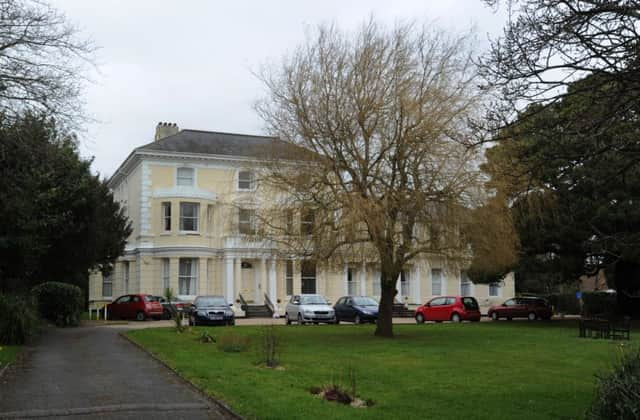NOSTALGIA: Willingdon home was the Sussex Bletchley Park


The British Y Service was the ‘ears’ of Bletchley Park and without this, code breaking was impossible. There were several departments under the control of MI-8. The RAF, Army, Navy, Metropolitan Police, Post Office and Foreign Office had interceptors and American units also contributed. Haystoun House in Church Street, Willingdon – today flats and previously an old people’s home – was the base of the American 129th Signal Radio Intelligence Company. In the 1940s it stood alone with space for the so-called ‘aerial farm’ – 40 aerials in the form of inverted L’s, 20 on each side of the house.
These were fed to a ‘set room’ that could cater for 42 receivers. Tables around walls had partitions to separate operating positions. Operators kept four-hour watches, known as ‘tricks’ and searchers tuned over a segment of the short wave spectrum listening for any new stations that might pop up. Experienced operators were able to recognise the Morse styles – the so-called ‘fists’ - of individual German signallers. Message pads were ferried by dispatch rider to London. Operators were trained at Camp Crowder in Missouri where they learnt to copy high-speed Morse onto a typewriter. However, a pencil and message pad proved easier because receivers drifted off frequency and one hand was needed to re-tune. The daily schedule was 15 sets at night and 25 during the day.
Advertisement
Hide AdAdvertisement
Hide AdSome 800 messages were received daily – three-letter groups of code transmitted by German forces in France; for training purposes the GIs also monitored German police transmissions, again in Morse. A dozen clerks worked in the Compilation and Records Room. Sometime after D-Day, the station was dismantled and men and equipment crossed to France. The unit served in France, Rhineland and central Europe, and formed part of the Army of Occupation in 1945.
The base was top secret and might have left no trace but for a brawl between GIs and British servicemen. A favourite haunt was Snappy Snacks, a café on Albert Parade.
Fights normally resulted in black eyes, but in July 1944, a Grenadier Guardsman, Edward Fox, was stabbed by Private First Class Juan Marquez. At his court martial, Marquez stated there had been trouble with British soldiers and he and a friend were carrying knives for self-defence. At 11pm, five British soldiers came into the café; according to one witness, a GI made a provocative remark and this led to a brawl. Fox, described in the post-mortem as six foot one and muscular, had been queuing for his meal. When he realised a fight was brewing, he rushed outside and was promptly stabbed in the groin, bleeding to death before an ambulance arrived. Investigators found a knife in the garden of his billet in Le Brun Road. Marquez was found guilty and given a dishonourable discharge, to forfeit pay and allowances and confined to hard labour for 10 years in America.
The GIs were billeted in Ashburnham Road, Le Brun Road and at Lynchmere, the former school at the junction of Ashburnham Road and Carew Road where Merewood Court stands today. During that hot summer of 1943 the Americans sat on the boundary wall – initials and the names of US states could once be clearly seen in the coping-stones. But the weather has taken its toll: Nebraska and Massachusetts are eroding fast, even though Texas hangs on in there. One intriguing inscription read, 16 Aug 1944 Pete & Daphne. Pete had cut his name deeply and this is still visible; Daphne is just discernable. But was Daphne an all-American girl waiting for her boy to come marching home? Or is she perhaps still in Eastbourne, treasuring memories of a wartime romance?
Advertisement
Hide AdAdvertisement
Hide AdDon’t miss out on all the latest breaking news where you live.
Here are four ways you can be sure you’ll be amongst the first to know what’s going on.
1 Make our website your homepage at www.eastbourneherald.co.uk
2 Like our Facebook page at www.facebook.com/eastbourne.herald
3 Follow us on Twitter @Eastbournenews
Advertisement
Hide AdAdvertisement
Hide Ad4 Register with us by clicking on ‘sign in’ (top right corner). You can then receive our daily newsletter AND add your point of view to stories that you read here.
And do share with your family and friends - so they don’t miss out!
The Eastbourne Herald - always the first with your local news.
Be part of it.